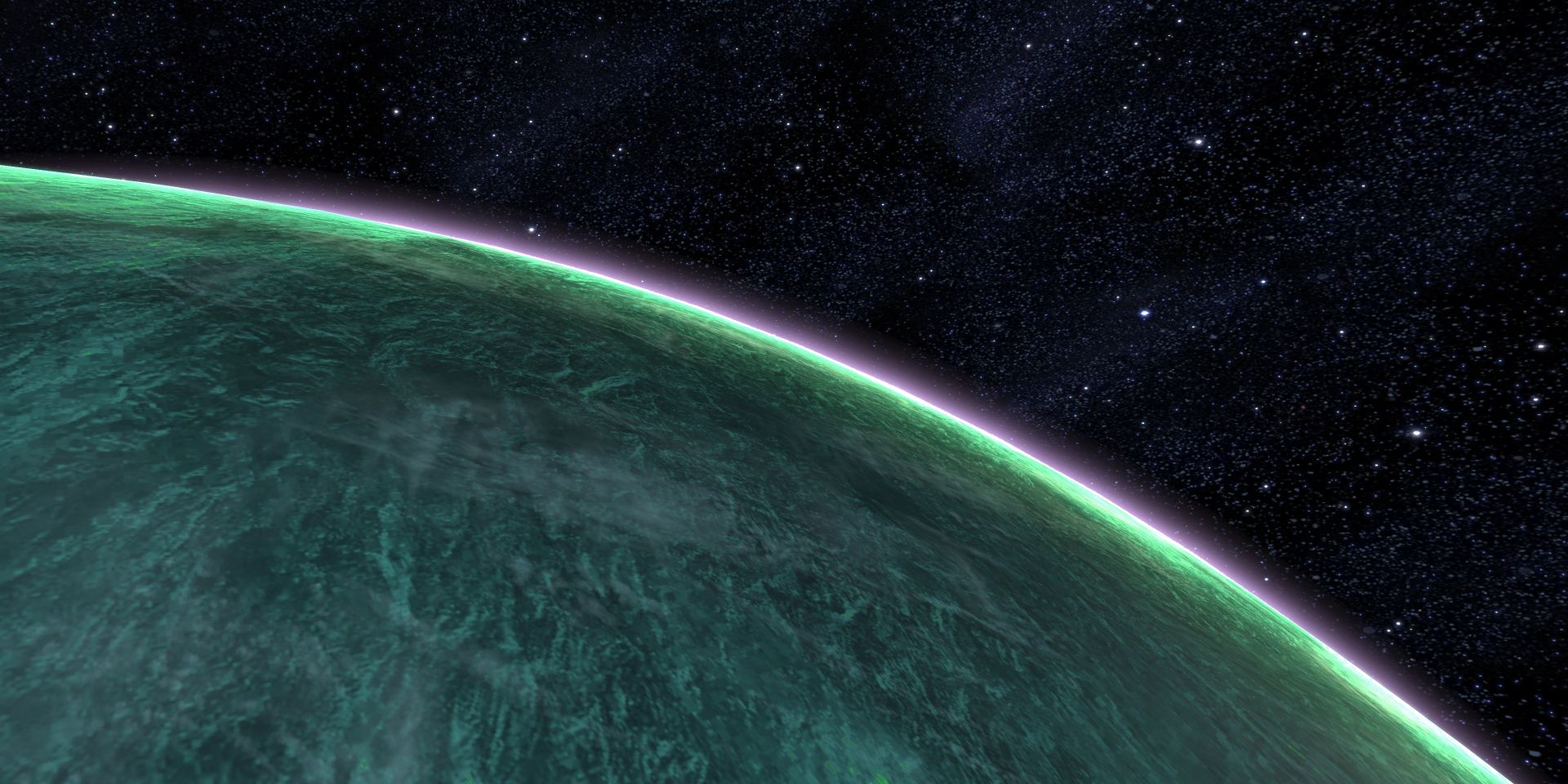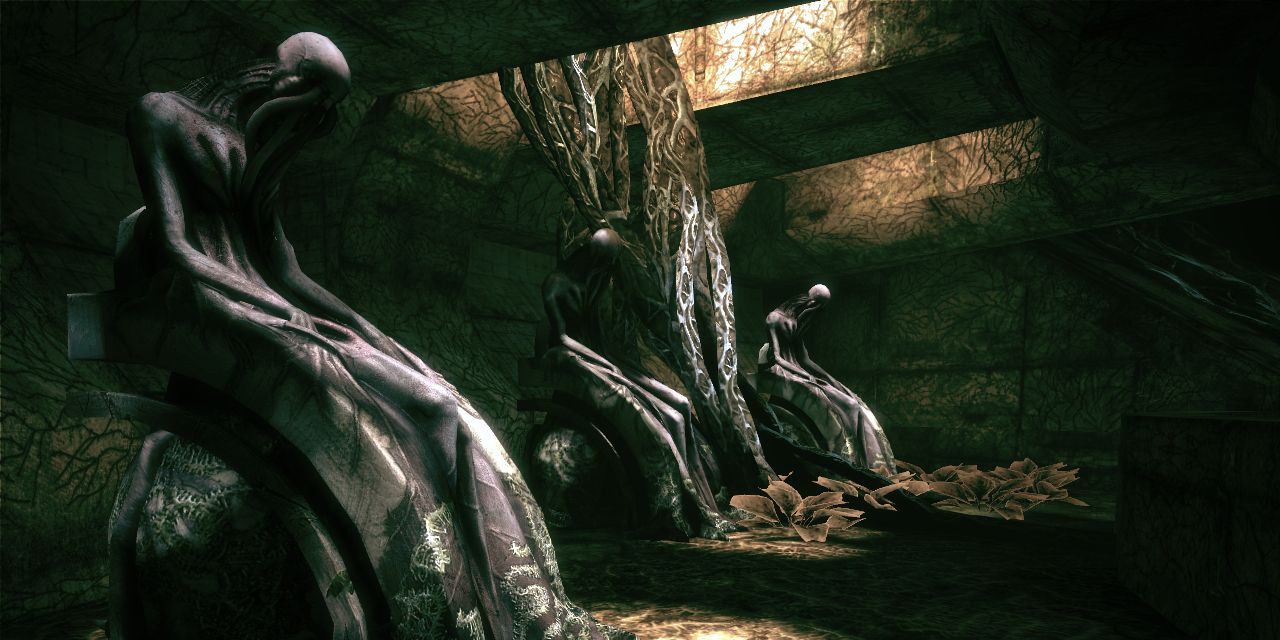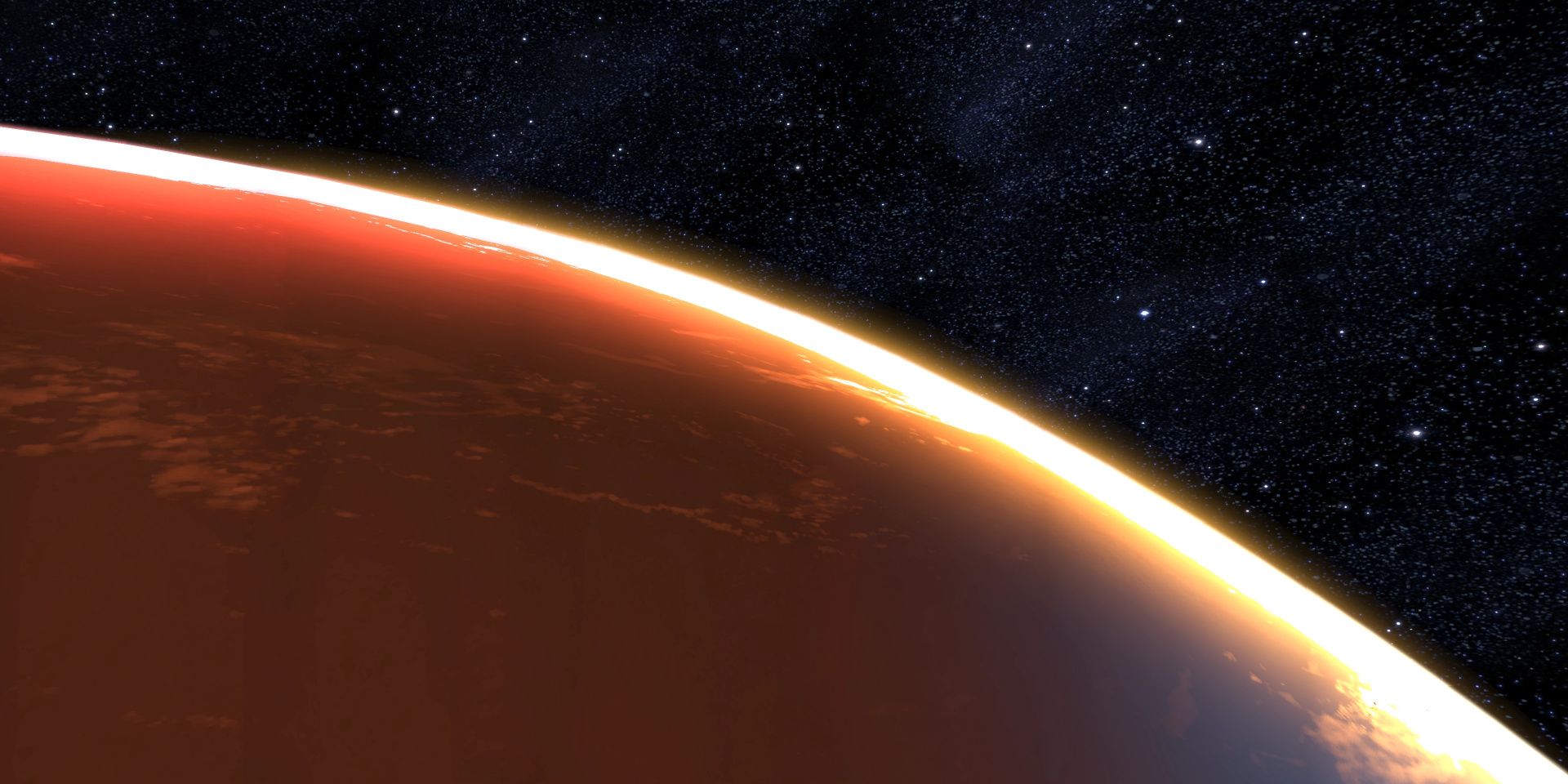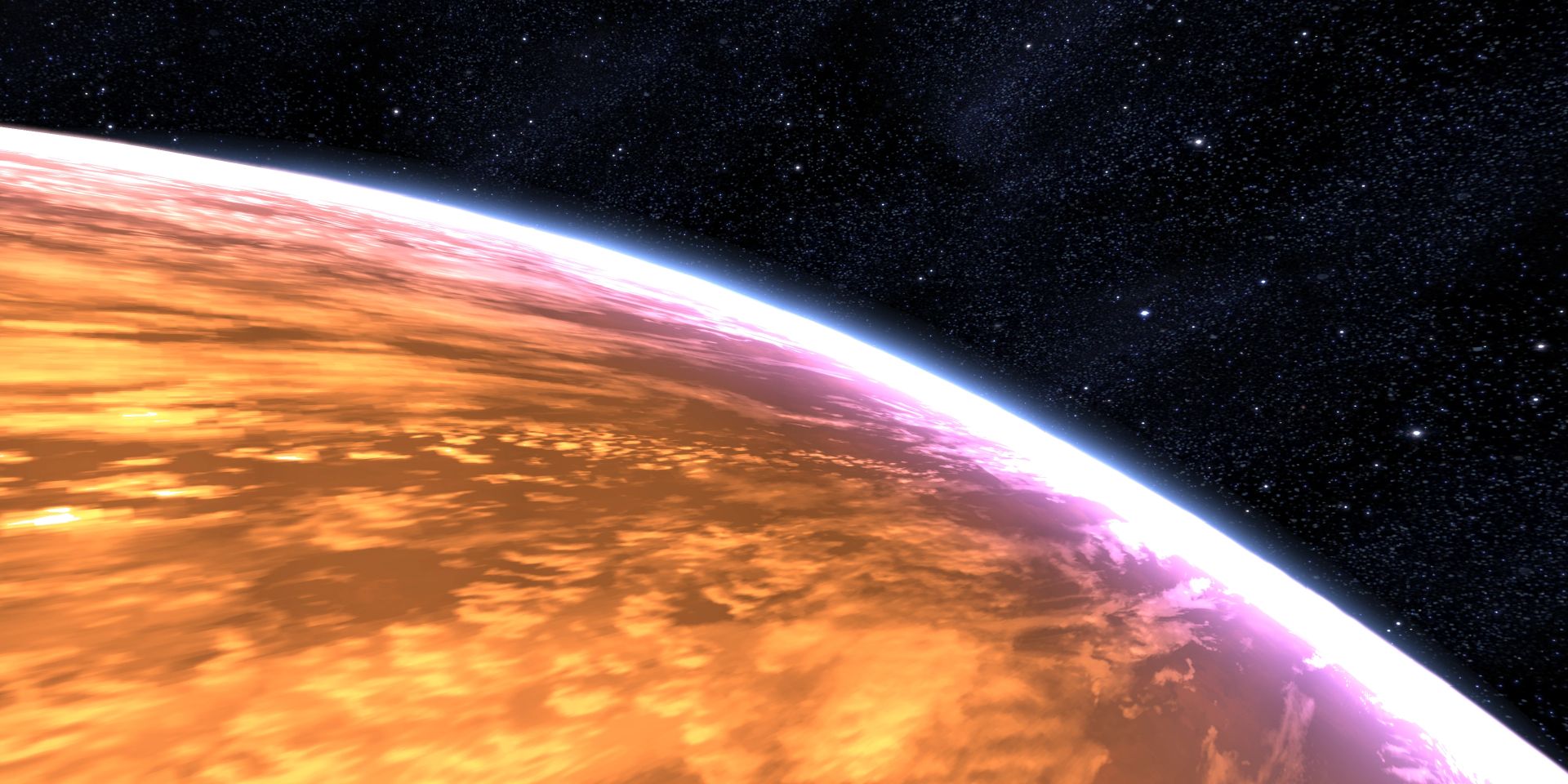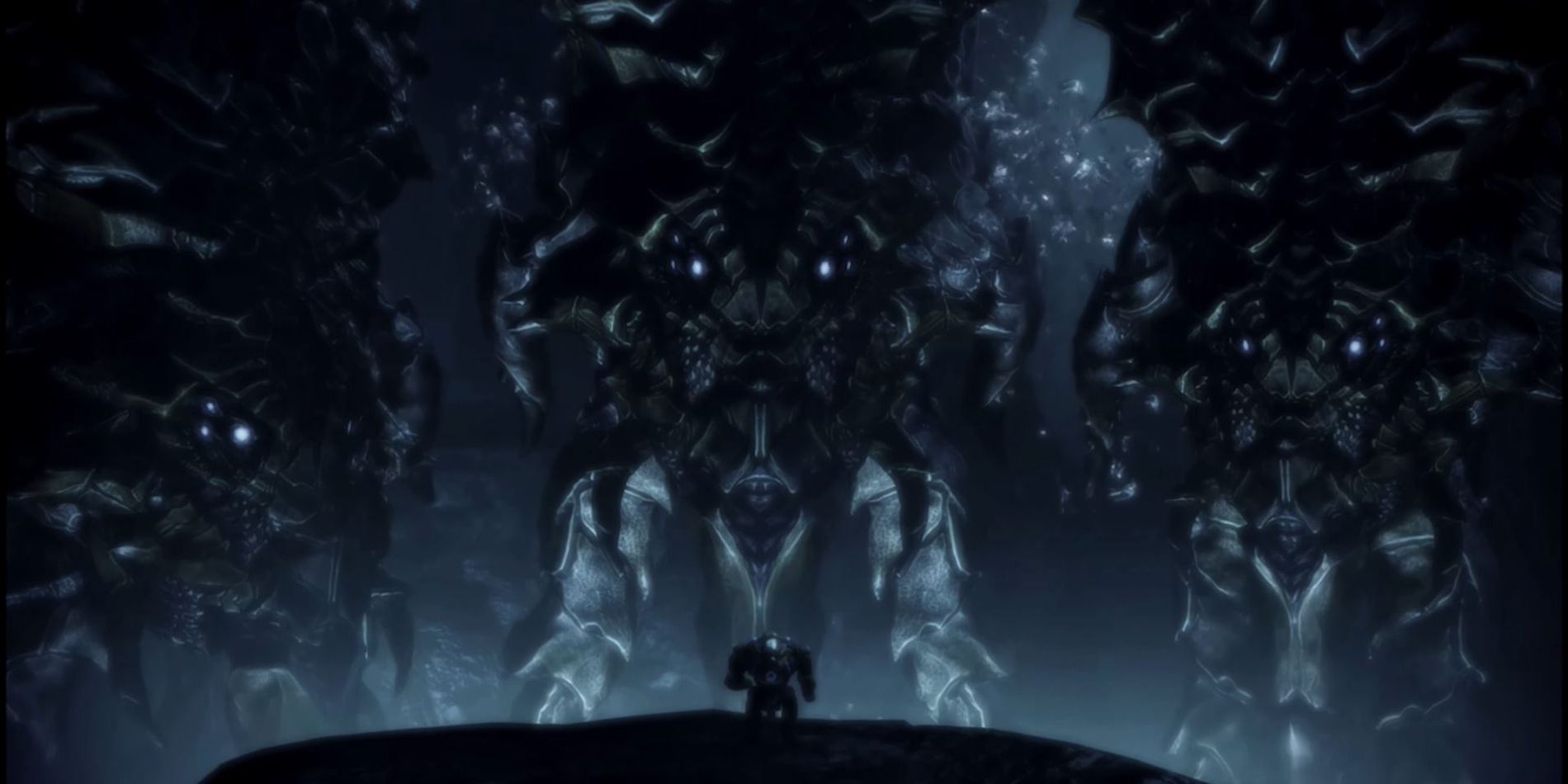The Mass Effect trilogy has seen a resurgence in popularity with the recent release of Mass Effect Legendary Edition, and once more new and old fans alike are exploring the stars aboard the SSV Normandy. The trilogy has hundreds of planets to find, from the familiar Earth to the lost world of Ilos. Some Commander Shepard can land on and explore, while others they can only fly past, but all are accompanied by an informational profile.
Considering the sheer volume of planets in the games, it's understandable that most players don't read about them all. Sometimes, however, the profiles reveal fascinating insight into Mass Effect's vast universe and aren't to be missed. These five planets are easily the weirdest in the galaxy.
Armeni
The planet of Armeni is the most massive graveyard in the Milky Way, but its past remains unknown. Too far from the sun for life to flourish, a flyby probe first registered something was strange here when it detected surface protrusions that were too ordered to be natural. Further investigation revealed millions of elaborate crypts beneath the surface.
Armeni was once a burial ground for an extinct space-faring species known as the zeioph, likely over 100,000 years old or more. As with the Inusannon and the Protheans, it can be assumed the zeioph were harvested by the Reapers in a previous cycle. If there was a reason the zeioph turned an entire planet into a mass grave, only the Reapers know it now.
Ilos
Four thousand years ago, a supernova knocked the Mu Relay into unknown space, rendering Ilos unreachable. This legendary planet is known of only through secondhand Prothean sources until Commander Shepard steps foot on it during the first Mass Effect. Shepard learns that, at the end of the previous galactic cycle, the Protheans concealed the planet's existence from the Reapers, with thousands of their brightest scientists sent into cryostasis here to await a time when the threat had passed.
Plans went awry, however, and the cryostasis system only had enough power to preserve life support to a handful of pods. The scientists awakened realizing they didn't have the numbers to stave off extinction, and spent the rest of their lives building the Conduit hoping it would help future species to defeat the Reapers. By the time Shepard and his team arrive on Ilos, there are only eerie ruins and the relics of the long-dead.
Logan
Don't be fooled by Logan's unassuming name; this hydrogen-helium gas giant is the subject of one of the few galactic mysteries that Shepard doesn't solve over the course of the trilogy. Twenty years prior to Mass Effect 3, a survey team was charting the Theseus solar system, of which Logan is the fifth planet from the sun, when they stumbled upon some strange readings. The team detected several disturbances in the gas giant's cloud bands, which seemed to suggest that many massive and solid objects were hidden beneath the clouds. However, as the survey ship grew closer, the readings vanished one by one, never to be detected again.
Ploba
Like Logan, the gas giant Ploba is a mystery. Survey ships have proven sunken mega-structures exist deep within the planet's atmosphere, with patterns too ordered and regular to be naturally occurring. These structures have been dubbed Ploba's "Deep Anomalies" by the galactic community. Several attempts have been made to solve the mystery of the Deep Anomalies, but none have succeeded.
Some believe that Ploba is a planet-sized supercomputer, while others theorize that an extinct space-faring species used the planet as a dumping ground for their weapons of war. The most recent attempt to reach the Deep Anomalies became a tragic disaster when the crew was crushed in Ploba's lower atmosphere. The similarities between the mysteries of Logan and Ploba may hint at a deeper connection between them. Are there hidden civilizations lurking beneath the gas giants’ clouds?
2181 Despoina
Though involves massive spoilers for Mass Effect 3, 2181 Despoina is too bizarre to not be mentioned. For all practical purposes an unexplored planet, Despoina is covered by ocean -- and the wreckage of starships that drew too close. A mysterious energy signal emitted from the planet ensures all ships that attempt to explore it are doomed to crash.
The reason for this is that Despoina is the hidden sanctuary of an ancient and powerful species known as the Leviathans. Ages ago, they created the Reapers to preserve organic life, but their creations went rogue and came to dominate the galaxy. Shepard recruited the surviving Leviathans into the war against the Reapers, but they're by no means friendly to species that have inherited the Milky Way. Now, the Leviathans lurk in the dark depths of the ocean with ominous motives of their own.


